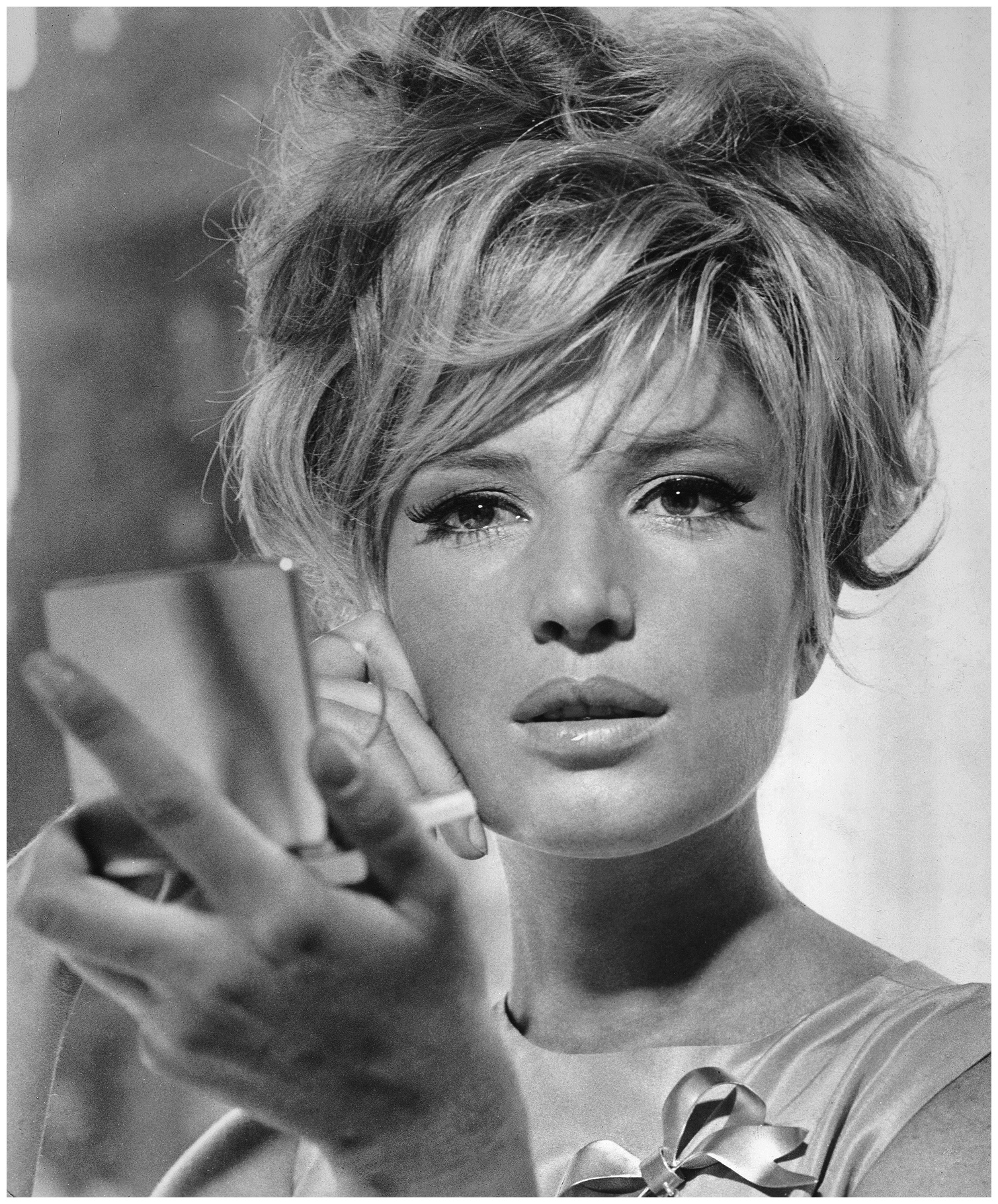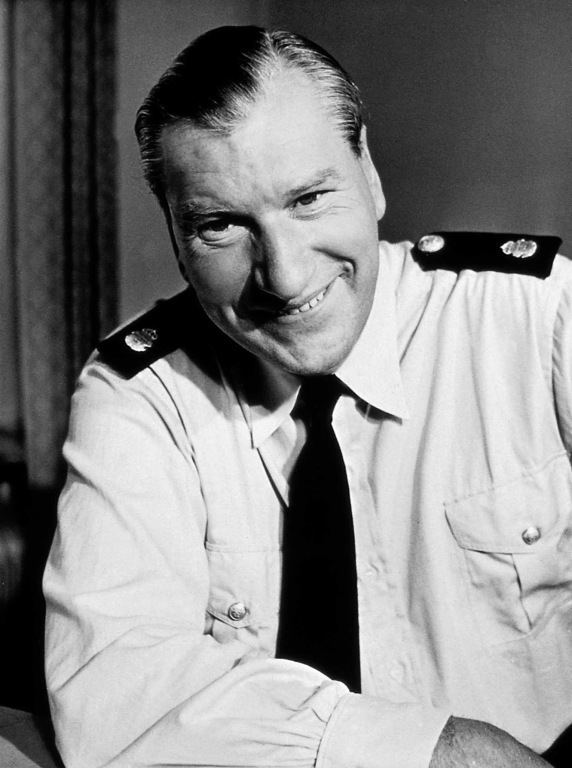Post by petrolino on Nov 6, 2017 1:56:01 GMT
The World War 2 drama 'Twelve O'Clock High' tells the story of the beleaguered 918th Bomb Group, nicknamed the "hard luck group", whose numbers are depleting as they're commanded to fly dangerous daylight missions over Nazi Germany. With morale at an all-time low, the airmen receive orders to fly at lower altitude and improve their strike rate. A tussle for power over the squadron leads to the threat of mutiny.

'Twelve O'Clock High' is a war film that primarily takes place within the offices of senior military personnel. The headquarters at an airfield base occupied by popular squadron leader Colonel Keith Davenport (Gary Merrill) constitutes a small front office that's lit by cinematographer Leon Shamroy like a cell with large barred windows. The low, sloping ceiling can be touched by Brigadier General Frank Savage (Gregory Peck) who eventually puts curtains up to create a bunker lit by lamps. This visual reflection of siege mentality is echoed by the pilots' collective disillusionment, leading to a claustrophobic finale in the cockpit.
'Twelve O'Clock High' is masterfully helmed by Henry King who frames a variety of soldiers' stories with one lens. It's a tale of sacrifice, about men pushing themselves to the absolute limit; men who tread a fine line between natural feelings of self-preservation and carrying out their military duty. The men wrestle with the idea introduced by an outsider General that professionalism precludes friendship and solidarity comes through putting discipline above all else.
Commander of the Strategic Air Command, General Curtis LeMay of Columbus, Ohio, reportedly told the authors that he "couldn't find anything wrong with it." 'Twelve O'Clock High' is said to have become a favourite film of many serving airmen. A television series, 'Twelve O'Clock High', was commissioned in the 1960s. In 1998, 'Twelve O'Clock High' was selected for preservation in the United States National Film Registry by the Library of Congress.

"A hard-hitting novel that inspired a classic war film, 12 O’Clock High was a very personal project for co-authors Beirne Lay, Jr., and Sy Bartlett. Drawing from their own experiences as Eighth Air Force officers during World War II, Lay and Bartlett crafted a heady mix of combat heroics and interpersonal drama based primarily on the exploits of the 306th Bombardment Group, one of the first American units sent to England to battle for air supremacy in the European theater. The resulting novel and film boasted an authentic grittiness that only true life could inspire."
- Allan T. Duffin, '12 O’Clock High: American Airmen In World War II'
- Allan T. Duffin, '12 O’Clock High: American Airmen In World War II'
"Twelve O'Clock High, celebrated film about the air war over Europe, shows barely any justly high-altitude violence. Even so, director Henry King and his actors expertly illuminate the complex burden of commanding personnel engaged in the brutal grind of repeatedly flying into combat as the odds of survival shorten. The portrait they render of men under pressure achieves a timeless, unblinking clarity. This is why, more than 60 years after its 1949 premiere, military educators still employ Twelve O’Clock High to talk about leadership. These conversations usually address such practicalities as command style, but the film offers insights on many other levels. During my two years as a visiting professor at the U.S. Army War College, I showed my students—mostly colonels fresh from Afghanistan and Iraq—a key scene from the film in order to make them think and talk about how the ethical reasoning in its imaginary world informs real-world officership."
- Mark Grimsley, 'Battle Films: The Moral World Of Twelve O’Clock High'
Gregory Peck

'Twelve O'Clock High' is a war film that primarily takes place within the offices of senior military personnel. The headquarters at an airfield base occupied by popular squadron leader Colonel Keith Davenport (Gary Merrill) constitutes a small front office that's lit by cinematographer Leon Shamroy like a cell with large barred windows. The low, sloping ceiling can be touched by Brigadier General Frank Savage (Gregory Peck) who eventually puts curtains up to create a bunker lit by lamps. This visual reflection of siege mentality is echoed by the pilots' collective disillusionment, leading to a claustrophobic finale in the cockpit.
'Twelve O'Clock High' is masterfully helmed by Henry King who frames a variety of soldiers' stories with one lens. It's a tale of sacrifice, about men pushing themselves to the absolute limit; men who tread a fine line between natural feelings of self-preservation and carrying out their military duty. The men wrestle with the idea introduced by an outsider General that professionalism precludes friendship and solidarity comes through putting discipline above all else.
"Cooperative relationship with the Air Force was crucial; it meant supply of military planes and airfield location. Contrary to expectation, the military were impressed with the story’s serious approach and with mogul Darryl F. Zanuck’s vision. Their agreement to help was contingent only on few minor changes in the script. “Twelve O’Clock High” displays excellent camerawork by the Oscar-winner lenser Leon Shamroy, including the depiction of a most horrifying aerial attack sequence. Some of the movie was shot at Elgin Field in Florida, and the state’s Ozark Field stands in for the scenes of the overgrown field in the prologue and epilogue. The air battles were taken from authentic combat footage from the Air Force archives, some of which never before seen by viewers. Producer Zanuck, head of Twentieth-Century Fox who initiated the project, believed that the movie “can serve as tremendous propaganda to stimulate interest in the Air Force.” This production was special to him due to his own service in the War."
- Emanuel Levy, Cinema 24/7
- Emanuel Levy, Cinema 24/7
"Offscreen, Gregory Peck was a major figure in his profession. He was a long- time governor of the Academy of Motion Picture Arts and Sciences, the founder of a theatre in his Californian hometown of LaJolla, and helped create the National Endowment of the Arts. He was an outspoken opponent of McCarthyism, of nuclear weapons, of the detrimental role of corporate ownership of the media, and of the abuse of political powers, most notably president Reagan's attempt in 1987 to appoint Robert Bork, the dubiously qualified ultra right-wing jurist to the Supreme Court. On screen, he was a born leader - King David in the Biblical epic David and Bathsheba (1951) and General Douglas MacArthur in MacArthur (1977), a striking portrait of a military commander and a man whose politics were far removed from Peck's. He was a natural to play leaders in simple-minded adventure flicks - a dashing Captain Horatio Hornblower in the 1950 film of C S Forresters nautical yarn, a tight-lipped head of the commando unit with the suicidal task of destroying a German artillery post in the eastern Mediterranean in The Guns of Navarone (1961). "Why did you pick me for this task?" Peck asks British intelligence officer James Robertson Justice, who replies (I quote from memory): "Because you speak perfect Greek, before the war you were one of the world's greatest mountaineers and you're a natural leader of men."
- Philip French, 'Gregory Peck : A Born Leader, A Liberal Conscience - And A Mount Rushmore Jaw
'Don't Sit Under The Apple Tree' - The Andrews Sisters
Commander of the Strategic Air Command, General Curtis LeMay of Columbus, Ohio, reportedly told the authors that he "couldn't find anything wrong with it." 'Twelve O'Clock High' is said to have become a favourite film of many serving airmen. A television series, 'Twelve O'Clock High', was commissioned in the 1960s. In 1998, 'Twelve O'Clock High' was selected for preservation in the United States National Film Registry by the Library of Congress.











